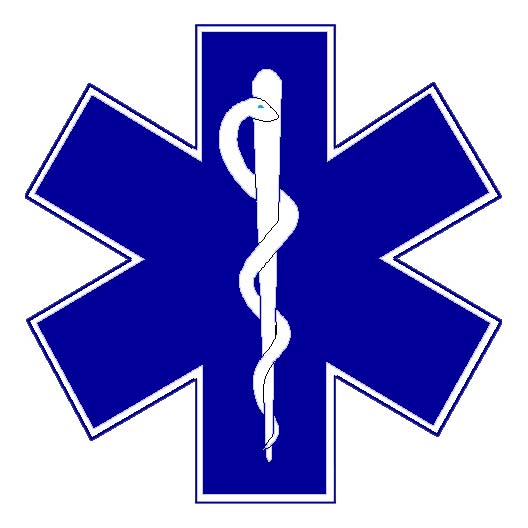
The six bars of the Star of Life represent six distinct phases of an EMS system – detection, reporting, response, on scene care, care in transit, and transfer to definitive care. The phases are described below:
Detection: Citizens must first recognize that an emergency exists and must know how to contact the EMS system in their community. There is no better way to contact the EMS system than by dialing 9-1-1.
Reporting: Callers are asked specific information so that the proper resources can respond. In an ideal system, certified Emergency Medical Dispatchers (EMDs) ask a pre-defined set of questions. If someone were having a heart attack, then they would look under the heart attack protocol for appropriate questions to ask and also give appropriate pre-arrival instructions (such as CPR). In this phase, dispatchers also become a link between the scene and the responding units and can provide additional information as it becomes available.
Response: This is the response of the EMS resources to the scene. This may be a tiered response with First Responders and EMT's responding initially and backed up by paramedics shortly thereafter. It may mean that a fire engine and crew are also dispatched to help with lifting and moving the patients or getting them out of a smashed automobile.
On Scene Care: A lot of types of care can be provided on the scene, versus waiting until the patient arrives at the hospital. Standing orders and radio or cellular contact with the emergency physician has broadened the range of on-scene care that can be provided. A long protocol of procedures and drugs may be used before the patient is removed from the scene. When the EMS system was just getting started, all patients were transported to a hospital. Today, in certain instances such as minor trauma, or when a patient is not seriously ill or injured, not all patients are transported from the scene to a hospital.
Care in Transit: Initially, patients were transported in hearses or station wagons, with nobody taking care of them in the back. With the advent of federal regulations and the maturing of EMS, specially designed ambulances now carry mobile oxygen, suction, patient monitoring and communications equipment, as well as special drugs for emergency care of patients.
Transfer to Definitive Care: Up until the passage of the Trauma Care Systems Planning and Development Act of 1990, a patient might be seen in the emergency room (ER) by a physicians trained in specific specialties, such as a cardiology or a surgery. They usually did not have the training necessary to address the many types of injuries and illnesses that present themselves in an ER. Today, there are board certified emergency physicians. Nurses now receive certification in emergency care and specialized training in trauma. Hospitals may hold special levels of designation in trauma care. This means they have additional specific equipment, rooms and physicians available for the most traumatically injured patients. There are specialized burn centers to handle burn patients and special children’s hospitals that handle only pediatric patients. Definitive care has come a long way, as has EMS, in a relatively short time.

 Trik Tips Sebelumnya
Trik Tips Sebelumnya
0 comments:
Posting Komentar